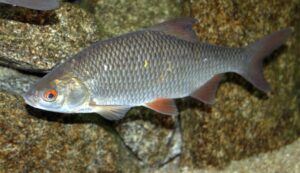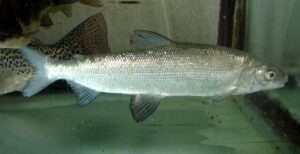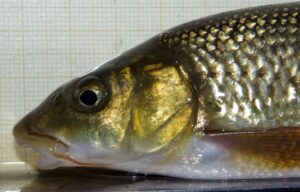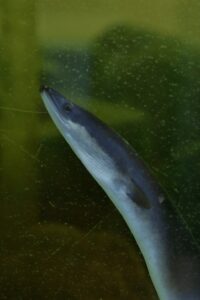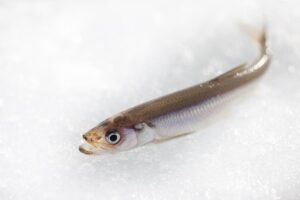Predatory fish : Wels Catfish (Silurus glanis)

The wels catfish, also known as Silurus glanis, is the largest predatory fish found in European waters.
It is an impressive freshwater fish with a distinctive appearance and rapid growth. This catfish species has become a prized target for anglers who see it as the ultimate trophy. The Wels catfish belongs to the Siluridae family and is also known as the European catfish or simply Wels.
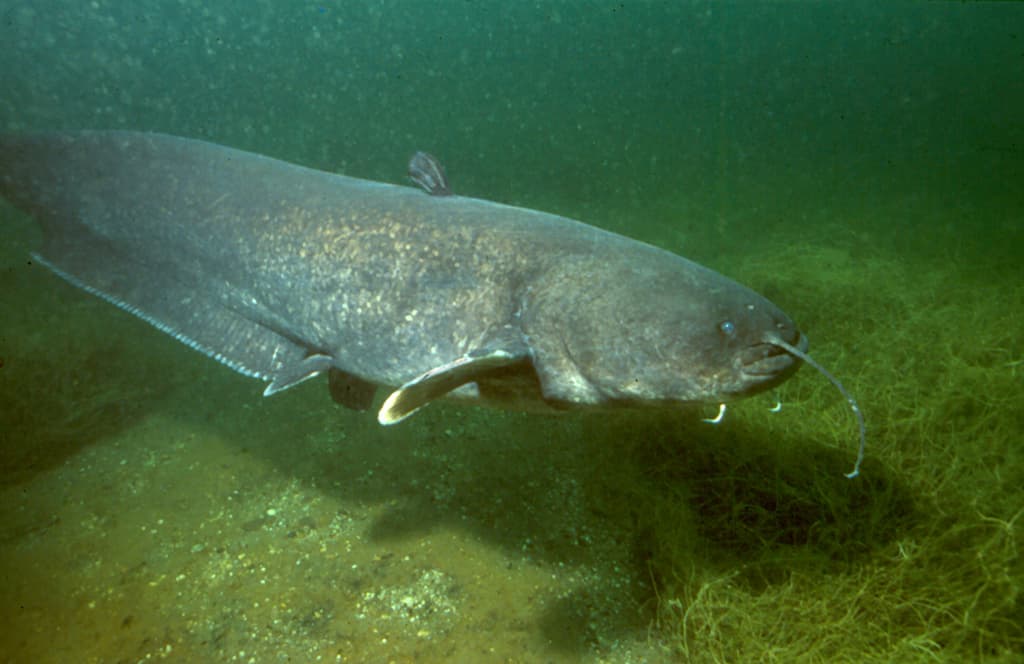
What is a Wels Catfish (Silurus glanis)?
The wels catfish (Silurus glanis) is a large freshwater fish native to the rivers of Eastern Europe. It is a giant fish that can reach lengths of over 2 meters. The wels catfish is the only predator capable of eating a 90 cm salmon.
Description of a Fish: Wels Catfish (Silurus glanis)
Identification of Wels Catfish
The wels catfish is a large freshwater fish that can reach up to 3 meters in length. It belongs to the catfish family. It has a thick and robust body of considerable length, characterized by a bulging front and a laterally compressed posterior part. Its scaleless skin is covered in abundant mucus.
The wels catfish has a massive, flattened head surrounded by six barbels, two of which are very long and located above, and four shorter ones under the chin. It possesses numerous tiny teeth that form a kind of rasp, helping it grasp and hold its food before swallowing it whole.
Its eyes are small, and the dorsal, pectoral, and anal fins are well-developed. The anal fin, which is very long, reaches the small, rounded caudal fin. The upper parts, flanks, and anal fin of this fish are marbled with large brown-black and gray-brown spots on a gray background, while the other fins are darker, almost black.
| Class |
| Actinopterygii |
| Order |
| Siluriformes |
| Family |
| Siluridae |
| Genus |
| Silurus |
| Species |
| S. glanis |
| Binomial Name |
| Silurus glanis (Linnaeus, 1758) |
Size, Weight, and Growth
The wels catfish can reach lengths of up to 3 meters and weigh up to 120 kg. Smaller specimens typically measure between 1 and 2 meters. The growth rate of the wels catfish is rapid, often reaching 2 to 3 kg per year during the first few years of its life.
Wels Catfish lifespan
The wels catfish can live up to 80 years in the wild. Females often have a longer lifespan than males.
Habitat and Lifestyle of Wels Catfish
Habitat
The Wels Catfish (Silurus glanis) is widely distributed in freshwater habitats in Eastern Europe and Asia, including Russia, Ukraine, Moldova, Romania, Hungary, Serbia, Bulgaria, and Greece. It can also be found in the brackish waters of the Danube and Volga deltas.
The wels catfish was introduced to Western Europe in the 1930s and 1940s for sport fishing purposes and to diversify aquatic fauna. Since then, it has spread widely in rivers and lakes throughout Western Europe. However, its impact on native fish populations has been a source of controversy and concern for the conservation of native aquatic fauna.
The wels catfish prefers calm and deep waters with abundant vegetation and structures such as fallen trees or underwater reefs. It is a solitary and territorial fish, defending its living space against intrusions.
Diet of Wels Catfish
The wels catfish is an opportunistic predator that feeds on fish, amphibians, mollusks, crustaceans, birds, small mammals, and even other catfish. It ambushes its prey by lying in wait near underwater structures and surprising them with a sudden acceleration. Although it is capable of hunting prey larger than itself, it prefers injured, sick, or dead fish. The wels catfish occupies the top of the food chain in the freshwater ecosystems where it resides.
Reproduction
The wels catfish reaches sexual maturity at around 4 years of age and typically reproduces between May and July when the water temperature reaches around 20°C. Females deposit their eggs in groups on submerged vegetation and can lay up to 15,000 eggs per kilogram of their body weight. The hatched fry emerge approximately one week later and remain attached to the vegetation for several days, feeding on zooplankton.
Importance of Wels Catfish for Anglers
Gastronomic Importance
The wels catfish is highly valued for its firm and tasty flesh. Many anglers dream of serving freshly caught wels catfish to their guests. However, due to the substantial size of these fish, it is often necessary to share them.
Importance in Fish Farming
The Wels Catfish (Silurus glanis) is an important fish for aquaculture due to its noble qualities and longevity. Catfish farms are often used for the production of table fish, contributing to the growth of the fishing industry.
Role in the Ecosystem
The wels catfish is also used as a natural regulator in ponds and small lakes. It helps control populations of smaller fish, such as whitefish, by preying on them. This helps maintain the balance of the aquatic fauna and preserve biodiversity.
Interest of Wels Catfish for Anglers as a Game fish
For anglers, catching a wels catfish is a formidable challenge. This fish is known for its strength and power, making it a formidable opponent for any angler. Once captured, the wels catfish can provide an unforgettable experience and a trophy-worthy photo. However, it is important to release the fish safely, as it can be dangerous for anglers who are not careful enough.
Fishing Techniques for Wels Catfish
Wels catfish are primarily caught using angling techniques. Lures are often used to attract the fish, while live bait is used to provide a more natural prey. Anglers can also employ techniques such as trolling to capture this formidable predator. Unfortunately, habitat degradation and increasing river channelization can make wels catfish fishing more challenging.
Common names for Wels Catfish
Wels Catfish is also known as European Catfish or Danube Catfish in USA.
Most popular common names for the Wels Catfish are Silure (french), Waller (german), Siluro (italian and spanish), Meerval (dutch) and Sum pospolity (polish).
Conservation Status of Wels Catfish (Silurus glanis)
The conservation status of the wels catfish is classified as LC (Least Concern) according to the IUCN Red List. The “Least Concern” category indicates that the species is widely distributed and abundant, signifying a healthy population.

